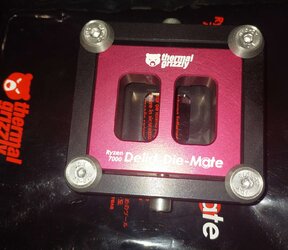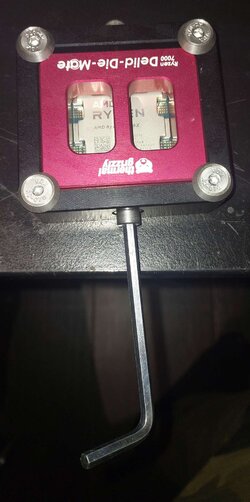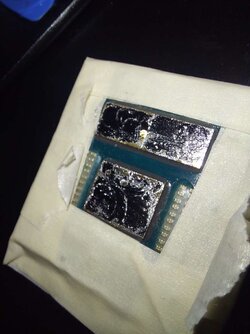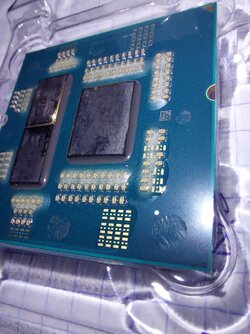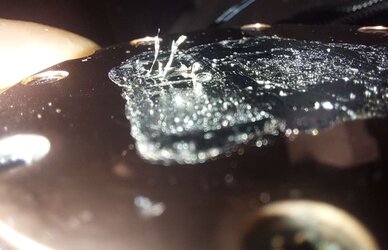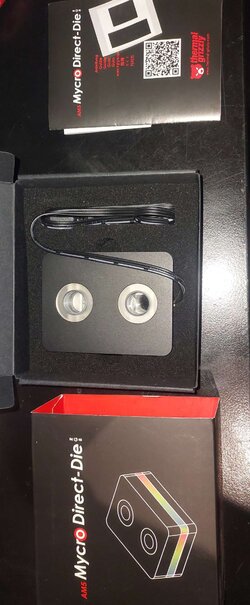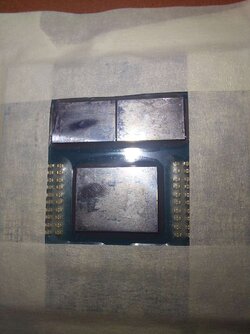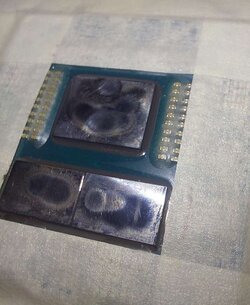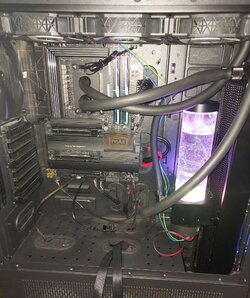Other than by famous YouTubers I haven't seen much info about delidding these cpus. I've seen the huge improvement in heat transfer and I'm tempted to do so.
However, I'm really not a fan of the "delidding by ripping the ihs by force" method used by "delid-die-mate" tool. It is really convenient and the tool is both available and not that expensive, but I've seen some pics online of dies ripped off the pcb when attempting a delid. It makes sense. These dies are soldered to the pcb. So by using sideways force we're essentially hoping the solder in top of the die fails before one on the bottom.
However, I've seen another delid method used by Gamers Nexus (shown very briefly in a youtube vid about self destructing am5 cpus). That method involves cutting the glue between the ihs and the pcb with dental floss, then suspending the cpu in a vice by the pcb with ihs pointing down and carefully heating the ihs with a heat gun while monitoring the temperature with a thermocouple. At some point the indium solder melts and the ihs falls off. This, to me seems like a much more gentle method. If the cpu dies are soldered to the pcb with normal lead free solder there is good 60C between the melting points so this should be safe.
Has anyone here delid, or have broken their zen4 cpu trying to delid? What is the delid-die-mate success rate? Are my concerns unfounded? Is the indium solder so soft there is little danger of ripping the dies off and people who put such pictures sound are full of sh***(because they put in the cpu wrong etc) ? What do you think?
However, I'm really not a fan of the "delidding by ripping the ihs by force" method used by "delid-die-mate" tool. It is really convenient and the tool is both available and not that expensive, but I've seen some pics online of dies ripped off the pcb when attempting a delid. It makes sense. These dies are soldered to the pcb. So by using sideways force we're essentially hoping the solder in top of the die fails before one on the bottom.
However, I've seen another delid method used by Gamers Nexus (shown very briefly in a youtube vid about self destructing am5 cpus). That method involves cutting the glue between the ihs and the pcb with dental floss, then suspending the cpu in a vice by the pcb with ihs pointing down and carefully heating the ihs with a heat gun while monitoring the temperature with a thermocouple. At some point the indium solder melts and the ihs falls off. This, to me seems like a much more gentle method. If the cpu dies are soldered to the pcb with normal lead free solder there is good 60C between the melting points so this should be safe.
Has anyone here delid, or have broken their zen4 cpu trying to delid? What is the delid-die-mate success rate? Are my concerns unfounded? Is the indium solder so soft there is little danger of ripping the dies off and people who put such pictures sound are full of sh***(because they put in the cpu wrong etc) ? What do you think?
